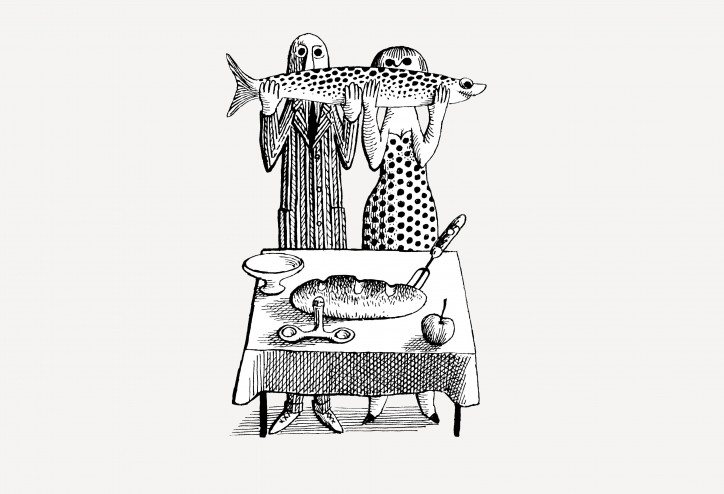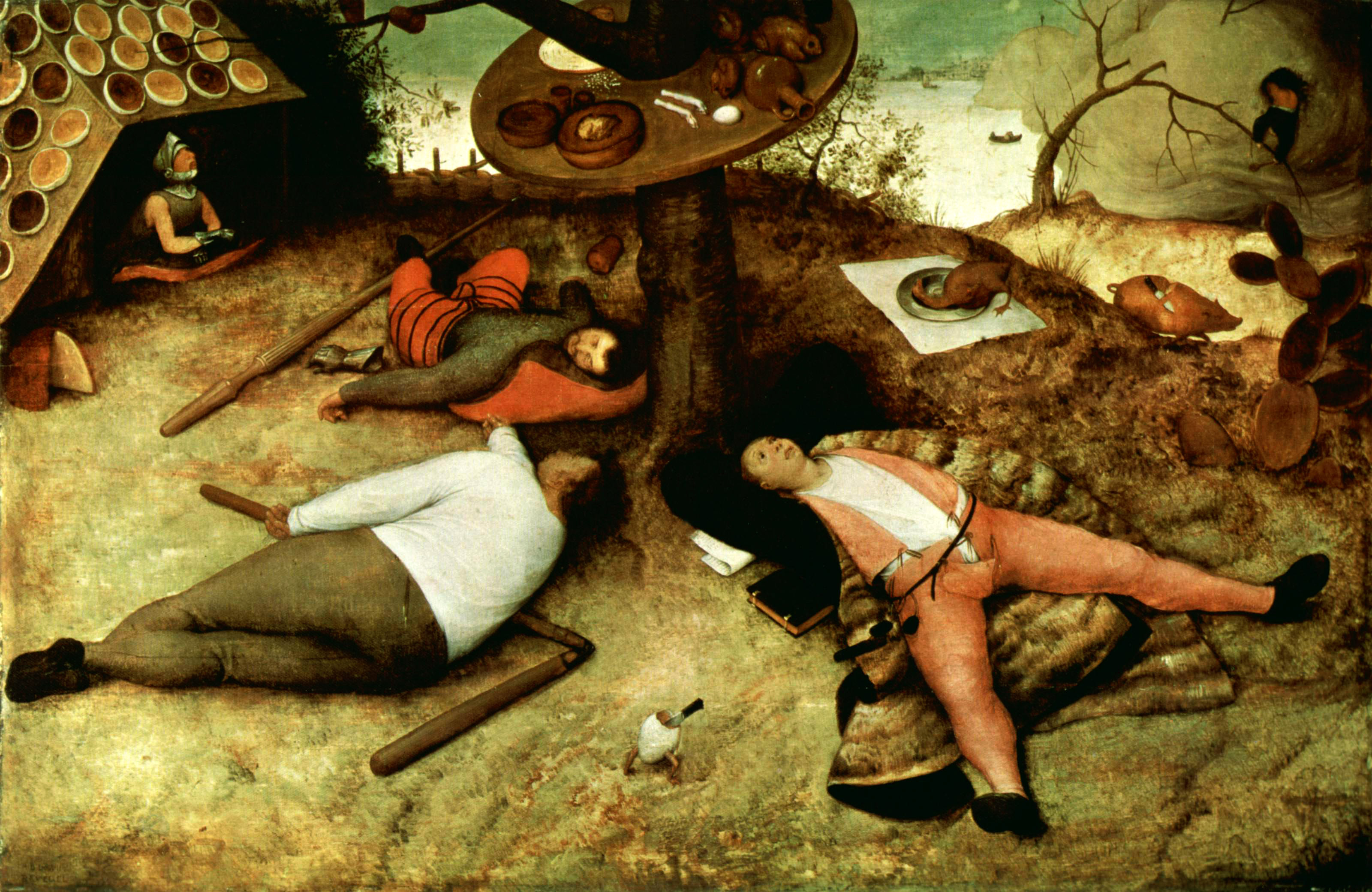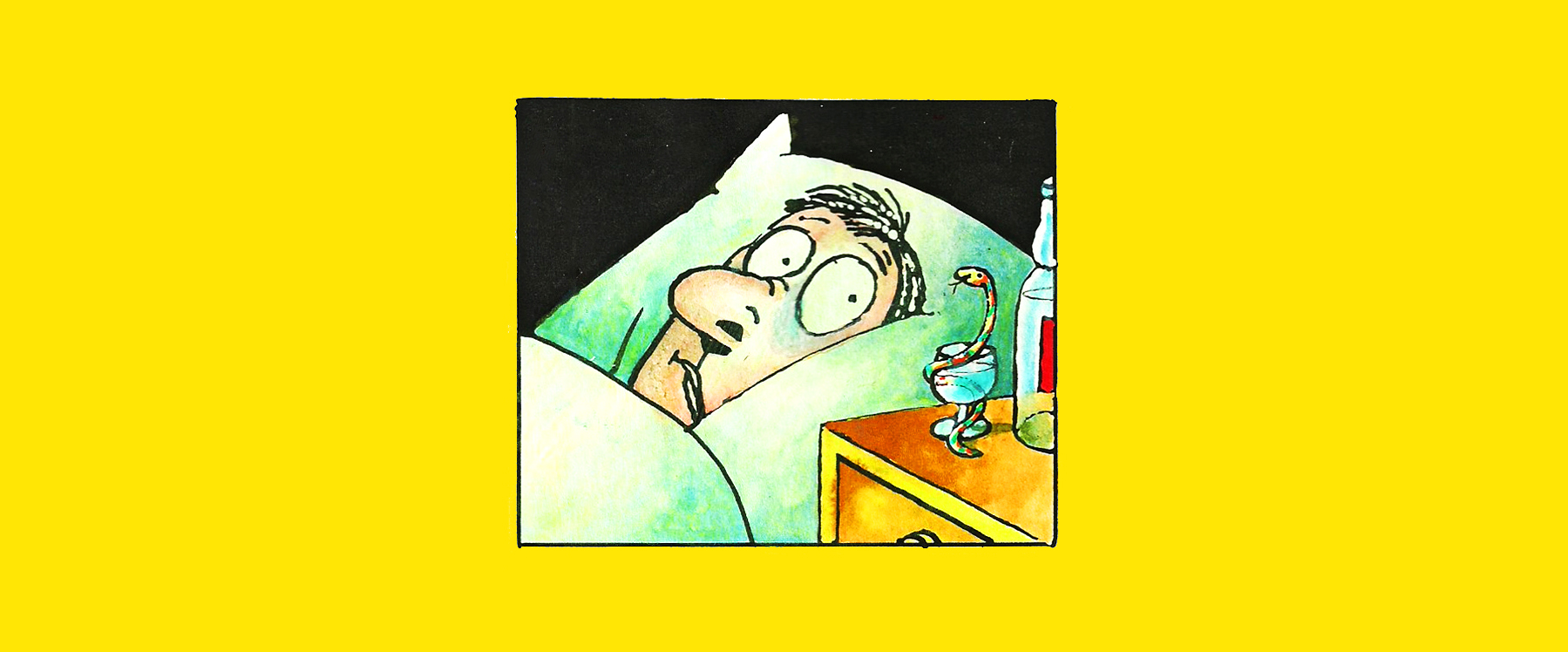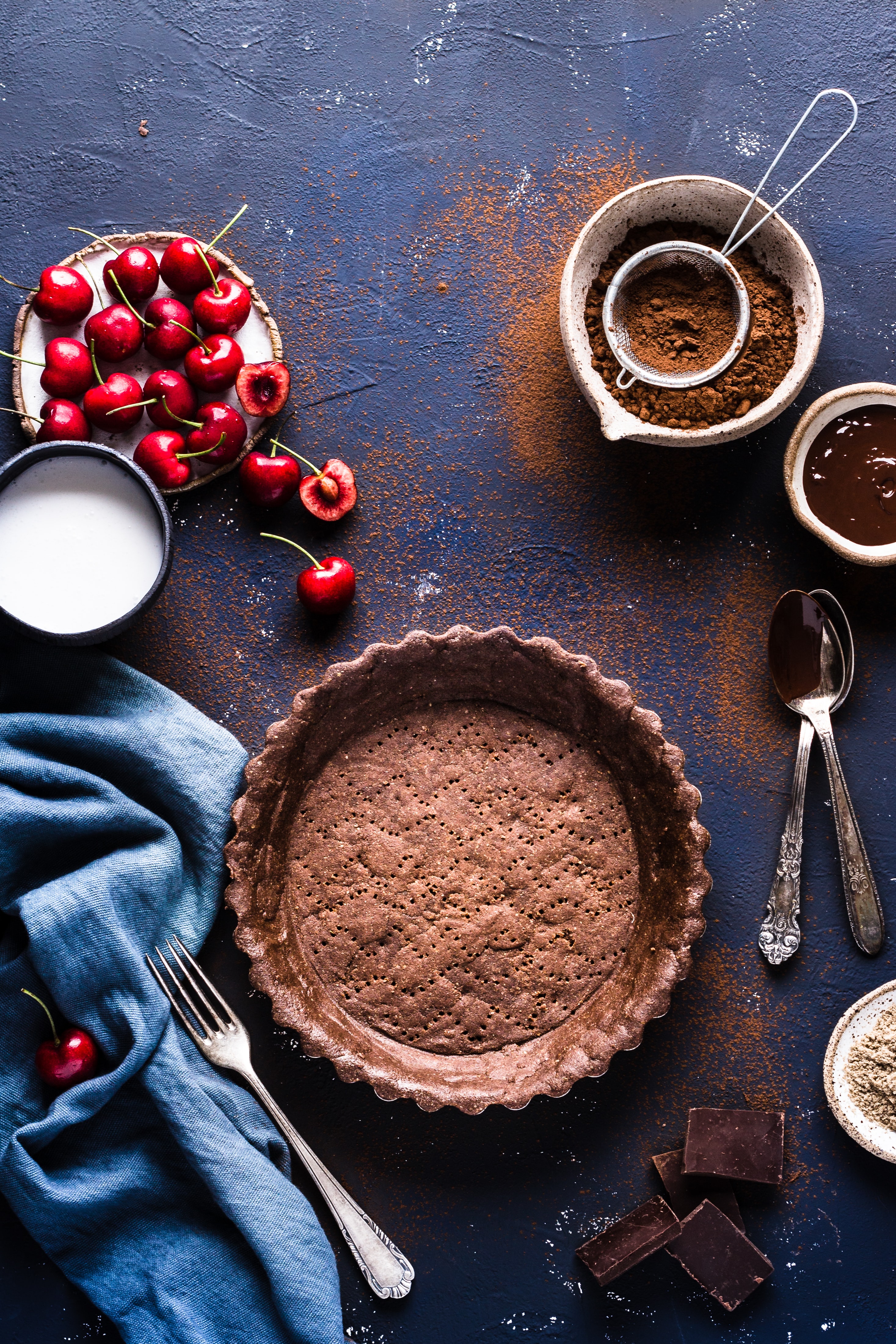
“A chance to save the world comes through the kitchen and home garden,” says Carolyn Steel, food visionary and architect, in an interview with Paulina Wilk. Steel explains who rules our plates and why dining together is the best form of economy.
She welcomes me at the door, her fringe tousled. We climb meandering stairs to the attic of her home in central London. The bustling Marylebone train station is just a few steps away, early evening beer being poured into pint glasses in a pub on the corner, while headlines on the free copies of the Evening Standard on the tube scream #brexit and #megxit. It’s windy – strong gusts slap the Victorian window and pull at the plants in the first-floor garden – but we’re cosy, with cups of milk tea to warm us up. We sit at the kitchen table, right under a giant lightbulb, a jar of pickles next to us. It’s the first interview Professor Carolyn Steel is going to give about her book Sitopia: How Food Can Save the World, published by Penguin in March this year. She is an architect, lecturer and urban life researcher, a studio director at the London School of Economics, and a visiting lecturer at Cambridge University on the course “Food and the City”. A TED speaker, designer of public utility buildings, and since the publication of her book Hungry City: How Food Shapes Our Lives in 2008, she is considered a leading thinker on food. Out of all activities, chopping onions is her favourite.
Paulina Wilk: First you surprised the world with your breakthrough theory of a hungry city. In your previous book, you wrote that the history of urbanization could be told through the lens of food. Now, you insist that better food could save the world. Where does an architect get such ideas?
Carolyn Steel: In the 1980s, as a wild-haired student, I raged about London docks being transformed into enclaves for luxury apartment houses. Back then, I was interested in just two things: everyday life and making the world a better place. I used to read Michel de Certeau’s works about the practice of everyday life, and then I went to Rome to research the life of one district across a period of 2000 years. Up to the times of Mussolini, there was a market there. Farmers came to sell their crops, and while they were there, they had their teeth fixed and hair cut. During my research, I often came across the word ‘mundane’. In English, we use it pejoratively, to describe things we consider boring and plain. But it comes from the Latin word mundus, a translation for the Greek kosmos. I realized that the mundane is the key to the essence of life. We take the most important things for granted, which is why we don’t notice them – they’re too large, too omnipresent. It’s the same with food. Eating connects all the phenomena in cosmic, yet mundane unity.
In your latest book, you take your readers to Sitopia – a place of eating.
At the end of my first book, Hungry City, in which I described the ways in which nutrition systems shaped cities throughout history, I decided that the phenomenon of food, its omnipresence and its ‘obviousness’, requires a name. I merged the Greek words sitos (‘food’) and topos (‘place’), and got Sitopia – ‘food place’.
It sounds a lot like another word: utopia.
Utopias are the best tradition of interdisciplinary thinking about the world. Utopists endlessly describe food, because when designing any society, the question about feeding it is a fundamental one. In those projects, there is plenty of farming, land division, and urban constructs. And the introduction to the classic Thomas More text reveals the double meaning of a utopia. It can mean a ‘good place’ or a ‘no-place’, ‘nowhere’. I found it quite saddening that our visions of a good life cannot become true. I decided to focus on food itself, on the world shaped by it and achievable, since we all inhabit it.
In Sitopia, you start by stating that we lack a philosophical approach to life and that it is time to start asking big questions again. What kind of questions?
First of all, what is a good life? What brings us happiness? The capitalist order is cracking and crumbling down before our eyes. Climate disaster is happening as we speak. So what do we want? So many wonderful and horrifying things are happening around us, we should give ourselves the right to think and some space for imagination, first and foremost.
It looks like we’re trying. Not long ago, the British courts gave a landmark ruling that veganism is a philosophical belief that needs to be legally protected, just like religious beliefs are. There seem to be new value systems dawning on the horizon.
We are animals and moral creatures at the same time. Navigating between those two aspects is not easy. In the past, we were not overly sensitive about eating meat. Animals were being slaughtered in the middle of the city, their blood flowed down the gutters, we liked our steaks rare. Only with the invention of railway transport did the issue disappear from our view: animals arrived from nowhere, already killed, portioned and cleaned. Since then, we have been avoiding learning what it takes to sustain our life. We have weaved this tight cultural barrier that keeps us in the state of blissful ignorance. The truth is, food is living creatures that we kill to stay alive. Food is a powerful medium that allows us to re-evaluate ourselves, the world, history, the future.
What is a good life, in your opinion?
If my left hand is the world, and my right is life, they have to hold one another. The question about what we consider a good existence changes together with the world, constantly evolving. Above all, there is no good life without asking questions about it and being in close contact with reality. That’s what Epicurus taught us, being here and now, appreciating the things that are the most important. His philosophy has a lot to do with food, and the pleasure of satiating hunger. It’s astonishing how rarely we get to experience it today.
Why?
Because we eat before we get hungry; we eat too much and too often, out of habit or prompted by marketing tricks. We have learned to approach life like it’s a problem. You’re cold? Here’s central heating! Not enough space in your fridge? Buy a larger one! Want to travel? Take a plane! And all these solutions have to be incessantly improved because that’s how we understand progress. First we had bicycles, then we had trains and cars. Now, we have electric bikes and scooters, taller fridges, better ovens… It never ends.
Your oven is more than half a century old.
It was made in the 1930s, and it works perfectly fine. Never before in history has our concept of a good life been so distant from the way we go about things. We need new, non-financial forms of growth. Reading a book can be growth, or an interesting conversation over a meal. One can wear the same clothes, sit in the same chair, bake in the same oven, read, exchange knowledge, and grow this way. We need a divorce from capitalism because we have lost ourselves in this chase of appearances.
How can we escape this madness?
Just like the two of us are, right now. We’re sitting in the kitchen, drinking milk tea, talking. Epicurus taught to do just that. Our most genuine wishes have not changed for the past 3000 years; the same things make us happy, we have the same physical needs, our brains work just the same. Capitalism doesn’t make people creators but consumers. Work generates expense, so it needs to be removed. In the newest stage of that process, people are to be replaced by robots. And what about us? We are supposed to consume, therefore our happiness must be dependent on buying ourselves a new fridge.
So, a good life means a return to reality?
In a way, yes. But the most important thing is that we create something. Every person has the need to create, not necessarily objects, but some value in their relationship with the world around them. It could mean cooking someone a meal, reading an article and talking about it, looking after a neighbour who fell ill, giving love. When we go to bed, we want to feel that we have made a difference, that our existence has some meaning. To be happy, we also need physical activity.
After hours of sitting down with a book or at the computer, I go to the kitchen to chop onions. Cooking is a primal act of creation, alchemy available to anyone. All you need is a handful of ingredients and a simple recipe. You have to eat every day, so you can cook every day, too: create something you came up with, do something pleasant for yourself and others.
Civilization grew through food. The division of chores – “I hunt, you cook” – is the oldest civil contract known to people, and sharing meals is an inherent human quality.
You call meal-sharing the oldest ritual humans still practice. And yet, it’s quite baffling. We are predators; therefore, we should be fighting for food, not sharing it.
It is a ritual of trust, bonding, and developing a sense of belonging. It’s the most important thing we do. If eating was solely about providing nutrients, we would have been living off of food pills for years now.
You don’t believe our issues with food can be solved in laboratories? What about ‘clean meat’ and superburgers grown by scientists?
Those ideas are in development, investors and tech giants are picking up on them. They will become part of our world, for sure. If we could choose between only industrial farming or only lab-grown meat, I would opt for the latter with all my heart. But this dilemma is built on false premises. A piece of beef from a grass-fed cow is one of the most nutritious meals a human can consume. That’s what science says. So perhaps a better option would be to look for a path that takes us back to a good coexistence between people and cows, as well as treating meat as an extravagance that we can enjoy on extremely rare occasions. If so-called clean meat helps us go down this path, that would be wonderful. But our most important task today is to restore the real value of food.
But the modern world is obsessed with food.
It’s a paradox. Food is at the very centre of our universe, but we externalize its real price. We expel it from our conscience, memory, economy. Meanwhile, British researcher Patrick Holden argues that we pay double for every food item we consume. One price is the one we cover in the store or at the market, and the second is hidden costs, such as health problems caused by bad diet, water waste and pollution, deforestation, soil erosion, loss of biodiversity, fuel burning… All those costs come up on our way of creating so-called cheap food.
Let’s make it clear: there is no such thing as cheap food. In order to produce it, we have to change nature and even destroy it. It’s impossible to put a price tag on such conflict, but it’s definitely more than zero. Since we have decided to live in a world where the market puts a price tag on everything, it should also estimate this kind of expense. So, a piece of beef from a cow that was fed soybeans grown on a plantation created where the Amazon used to grow, should cost, I don’t know, $500. You can’t afford it? Don’t eat it then, instead of pretending it costs $2, destroying the planet, and fuelling economic imbalance.
Let’s take another example. You’re eating doughnuts, ingesting an enormous amount of sugar, while we know that the NHS [the British National Health Service – ed. note] will break down within a decade because of excessive costs generated by treating type 2 diabetes. Those expenses involve doctors’ payrolls, medication, and so on. Let’s inject them into the real price of a doughnut, and we’ll see that it doesn’t cost £1, but £20. What happens then? We stop buying it, and rightly so.
We cannot maintain our existing eating habits, because we won’t last until the end of the century as a species. We have to change. My suggestion is that when pricing food, we include all the costs we have been ignoring. This way, we will stay in sync with the world and with reality.
But will we be able to afford food at all if that happens?
Today, organic food seems expensive in comparison to veal cuts and cheese from the reduced aisle, but it actually includes the real cost of production. In the future, its price wouldn’t actually exceed the financial means of most people, and it has already been calculated. Giving food adequate price tags means we value it more, and therefore don’t waste it or throw it away. On top of that, we support economic networks: producers, shopkeepers, service providers. We provide each other with work and income. We can afford good food: organic, made by artisans and small producers, local food, seasonal food.
You mean everything I used to eat as a child. Poland joined the international food market just 30 years ago. Quinoa, avocados and chemically-grown winter tomatoes suddenly appeared on my plate. Before, strawberries were only available in the summer; in the winter, we had sauerkraut.
It is worth holding on to that. The radical change of our diet and our relationship with the food market happened only recently.
How is it possible that upon entering a store, I am offered mostly processed foods, and nearly every product I see makes me feel guilty? Whenever I buy an avocado, groats or a hot dog sausage, I feel like an Earth-destroying criminal. How did it come to this?
It is the result of an unspoken pact between politicians, the food industry, and the rest of the population. For ages, feeding the people was the biggest nightmare for everyone in power, so when railway transportation became available and the industrial revolution happened, a lot of new enterprises started popping up, eager to make money on food, such as grain and meat companies from Chicago. They soon learned to increase their profits from excess grains and cattle by transporting it, deep-freezing, and so on. And politicians were happy to give them control. That was step one of the pact with the devil. Later on, the development of railways made the whole background of food production completely invisible for the city dwellers – abattoirs and farms were taken away, far from the cities.
Since then, we have been living a life straight out Pieter Breugl’s painting The Land of Cockaigne, well-fed and carefree. We love to eat, and our bodies and brains have no idea we left Serengeti a long time ago, so they keep stockpiling fat whenever they get a chance. The food industry is taking advantage of it. We haven’t been aware of it for a long time. Where does so-called American cuisine come from? Pure calculation. People arriving at the new continent were used to different foods, so their diet was brought down to the lowest common denominator. All there was left was the things our animal bodies love the most: salt, sugar, fat. And when we eat something so deprived of flavour, we don’t feel sated, which is why we keep consuming. That’s the reason behind the supersized portions and obesity crisis in the US. This is exactly how private businessmen create the landscape of junk food, without any control given to public institutions and society. It is a truth well-known since the ancient times: whoever controls food, holds power.

Power likes to reach far.
And it has reached Polish plates. The latest chapter in the process of food manipulation is the globalization and consolidation of the food industry. Contemporary nutrition is governed by a handful of giant corporations whose roots I just explained. The names of the very people who created the first grain warehouses and meatpacking districts in Chicago are now global brands. In recent years, many of them consolidated, which led to an even greater power grab.
Which string in this tangle of interrelations would have to be the first to go? How do we dismantle such a tight system? Can I do it on my own?
The most wonderful thing about food is that we can change it quickly and get results almost immediately. We eat every day, which means we can make better choices every day. It may sound like a paradox, but it’s easier for you, in Poland. Your memories of doing things the right way are still fresh. You remember growing your own food, making preserves. But even in communities long-deprived of food independence, such as the US or Great Britain, healthy nutrition is a trend that has been growing since at least 1970s, when the first cooperatives appeared, connecting farmers, shopkeepers and city dwellers. In Brooklyn, a group of hippies got together to protest the destruction of family farms that were being replaced by vast swaths of one-crop cultures. They got into a van and drove around New York. Then, they found a few small-scale farmers and agreed to have their products delivered regularly. That’s how the famous Brooklyn Food Cooperative was started, a classic example of how to establish a healthy system instead of subjugating to harmful solutions. Today, such cooperatives are popping up all over the globe.
How do you eat in London, a global metropolis, one-third dependent on food imports from abroad?
I use an organic box scheme. I order the food I need and pay for it online, and then I pick up my boxes, brought to the local collection point by farmers. Everything is organic, seasonal, and local, packed in environment-friendly reusable and returnable containers. I also have two organic food shops nearby. I shop at Waitrose, the most ethical supermarket that supports organic, ecological solutions. I also started growing herbs and vegetables on the roof of my house. They get four hours of sunshine a day, and that turns out to be enough to grow cucumbers the size of courgettes, with no fertilizer! Here, try my pickles from last year.
Delicious. But in your book, you wrote that city farms will not be able to feed future cities.
They won’t, because just like lab-grown meat, they can only be produced on a limited scale. 20 years ago, I was already working with some architects to create the first vertical farms in London. One went bankrupt, and the other one is still running, but only because it’s using municipal space almost for free. We know that city farms are good for growing only certain kinds of plants. Tiny lettuce from such farms costs a fortune, because it needs plenty of LED light, chemical fertilizers and expensive infrastructure. A potato can’t grow like this, and whatever is fit for farming this way has very low nutritional value. So the solution is still not good enough, but architecture students keep churning out new projects. Being human, we find it difficult to give up hope that technology and knowledge can save as. But this kind of technological hysteria only pulls us away from the point.
You believe the answer is in the past? In scaling down, getting closer to nature?
Yes, and in making changes in our entire value system. We must make a conscious choice to start living in fair societies and eliminate poverty. Food sharing is a sophisticated economy. In tight-knit societies, we are more inclined to give meals to others; therefore, we are less greedy, we get a sense of justice and balance. Just imagine you’re sitting at a table with family and friends. Suddenly, one person starts hoarding all the food. Shocking and unbelievable, isn’t it? And yet, that’s exactly what is happening with money. It is being taken from under our nose. Meanwhile, it is food that’s the most valuable thing in the world. It has inherent and unremovable worth, which we notice with perfect clarity during the times of crises, wars and tragedies. Food loses its value only when it’s in surplus, like in the West right now, where the amount of calories produced exceeds the demand twice over.
We produce too much food, and we waste a lot of it. A billion people are obese and ill, while another billion are starving. Perhaps we don’t really know how to share?
Food production system decides for us what we should eat. On top of that, food has become monetized. Which is why the 2008 bank crisis led to a food market crisis in 37 countries. Food prices are being manipulated by investors who are not even involved in food production. As a result, farmers in many countries are starving, and villages become food deserts. It’s also due to the belief in magical solutions, such as the green revolution in India.
You are no tech enthusiast. But it can be helpful in achieving a better life.
Technology is amazing, but we should change the way we approach it. Civilization entered a period of intensive growth once we started processing food with fire. Everything that happened afterwards required inventing new technologies. But if we imagine our march through history like it’s a walk with a dog, technology should be the dog. We should be its owner. We need to retain the power of choosing the route of this walk. About 200 years ago, science became its own discipline, pushing culture and philosophy away. Since then, we have been more than enthusiastic about every new solution it offers. Unfortunately, we forgot to be just as keen on asking questions about the nature of a good life. Technology is impersonal, which is why the market likes it so much. Technology makes transactions easier. But human trust would be the best currency in the world. And it used to be just so.
Do you believe it can all be undone? Can we go back to human relationships and small-scale economies?
Oh, yes! And it’s already happening. In 1970, only one type of English cheese was available in the shops. Today, we have dozens of them; more than the French cheeses! They’re produced by small artisans. A new group of producers is emerging. Within it, I have distinguished two subgroups of forward-thinkers. One is people who have burnt out in corporations. They have reached their forties or fifties and gone into farming because they were feeling unproductive. It offered a remedy. I’ll say it again: people are animals. We want to be close to nature, do something that matters, work with our hands. Those burnt-out managers bought some sheep and some land, reclaimed ruined soil, and started making cheese, feeling successful and fulfilled. The other subgroup is people like me, hungry for better food and a better life. I managed to cross paths with the former, and now we have a symbiotic relationship. I buy their cheeses and pay good money for good food, even though I’m not a wealthy person at all.
You wrote that the change in our approaches to food takes the form of an ocean wave, starting near the bottom long before it becomes visible on the surface. But is the change of individual choices enough to upend the unfair system, supported by powerful businesses and politics?
We need a lot of different changes because food creates a complex universe. If we see ourselves as wild creatures that have evolved, if we admit that our life is dependent on the energy we get from food, we will realize our own limitations and interrelations. But if we manage to return to the more corporeal world of producing and self-sustenance, we will regain the feeling of belonging and order, and will no longer feel powerless and lost. So, thinking of our relationship with the earth would be a good place to start. Let’s take a look at the land, listen to it.
And do what?
Grow what the soil can produce in given conditions. Instead of using force, we should see its wisdom. In the past, we built our settlements where the soil was good enough to feed us. Only over the past two centuries have we been doing pretty dumb things, like building cities in the desert.
I would be happy if I had a grocery store on my street where I could buy local produce. We have swapped neighbourhoods and tribes for online communities. But space cannot be replicated online, and I say this from an architect’s perspective. As an animal, I know that no virtual experience can top a real one. We replace premium quality relationships with something mediocre. And since it cannot satisfy us, we become obsessed with substitutes.
But what can we do to stop upgrading our smartphones and start cultivating our gardens? It takes a cultural revolution. We need to make land cultivation fashionable instead of promoting new apps.
Of course. And you know what the strangest thing is? This change is already happening. I bet your peers in Poland are already crazy about making preserves and pickles.
It’s true.
Ha! I have been torturing 40 friends with my pickles. And now many of them make their own jams and preserves. It’s contagious because it responds to our genuine needs. We are belatedly starting to ask the question: what is a good life in the age of the internet? Can it be measured by GDP and economic growth? The climate crisis will force us, as well as politicians, to start treating this dilemma seriously. Just look at Greta Thunberg and the angry climate protests of the youngest generation – it’s already gaining pace. Now we need a new, coherent vision of a good life. I believe we can define it easily with food. If we assume a good society is one in which everyone eats well – local, nutritious, seasonal, organic food – it will give direction to economic and technological changes. It will restore diversity and natural balance. Not only because we will be forced to step away from enormous monocultures, go back to crop rotation and smaller-scale farming. Otherwise, the soil will stop bearing crops.
What will the future of farming look like?
It will be similar to traditional farming. Closer to nature, the greatest farmer who always strives to achieve the maximum effect with the available means and ensures balanced, self-restoring order. Let’s give farmers their rightful place in our culture. They’re the most important people in the world. And they’re still the majority. About two billion people on the planet work in the farming industry.
People are escaping from the countryside, and those who stay are considered losers.
Farmers were always underappreciated, but it is changing. I fly around the world to attend various conferences about architecture and nutrition. Among the many talking heads, there are usually one or two farmers present. Everyone looks at them like they’re superstars or sages. Look at what happened with chefs: 20 years ago, nobody cared about them. Today, they’re celebrities with great authority and astronomical salaries. And what is any chef’s trump card? Their supplier: a farmer. Modern farmers are creative and ambitious people, reaching for technologies to improve their work with nature. Those I know are very happy and love their job. City people are green with envy.
Urbanization is everywhere, and the food industry is so enormous. Does real countryside, real farming, still exist?
Countryside always was an artificial concept, an environment modified by humans, not by nature. The first villages were created around the cities in Mesopotamia as people regulated rivers to build water reservoirs and irrigation systems. The city and countryside are complementary systems. When the Greeks created the concept of polis, they pointed to the need for independent food production and close ties between cities and farmlands.
But they knew it required maintaining the small-scale city-states. How do you imagine such symbiosis when megacities and urbanized zones keep emerging, such as the Chinese Pearl River Delta, where more than 100 million people are supposed to live?
It will be more difficult to do there, for sure. My main proposal is to maximize the areas where the city meets farmland, which I call the city-nature interface. The ideal situation would be standing with one leg in the city and the other in the countryside. Every utopia suggested limiting the size of cities and merging them into networks; it’s a valuable model that’s still worth striving for. But even in megacities, we get a chance to utilize the space well – for example, by making green patches, pocket gardens, little roof gardens. Such opportunities exist even in those cities with favelas or slums, because these areas will become more regulated over time, and then they can be planned in a greener way. We could also protect nature like they do in Japan. Thanks to the land protection law, Tokyo did not destroy farmland and grew around those patches instead. Today, farms exist within the city tissue, feeding entire districts. Every city could come up with its own ideas. The future is urbanized, but the scenario has not yet been written.
Do you consider yourself a utopist?
I believe that we can change the narrative. We won’t find happiness in bigger cars, just in loving our friends and family, doing useful work and being in touch with nature. We know there is a strong link between eating alone and depression. We are social animals, we need each other, we have evolved in groups. Meanwhile, capitalism praises individuality, which is inhuman.
When we eat, we do it together with all other living creatures. We use up the same resources, taking part in the circulation of biomatter. Just like everything around us, we go back into the soil. Personally, I find it very reassuring to think I coexist with trees, microbes and polar bears. And when I eat, I absorb the same atoms they absorb. I like knowing that all is one and that we are part of one everlasting meal. This is life, so eat and be eaten!
Parts of this interview have been edited and condensed for clarity and brevity.
Introduction translated by Aga Zano










